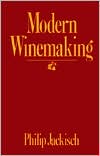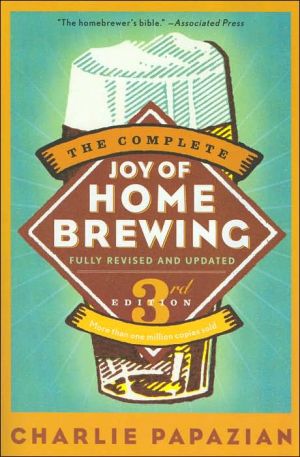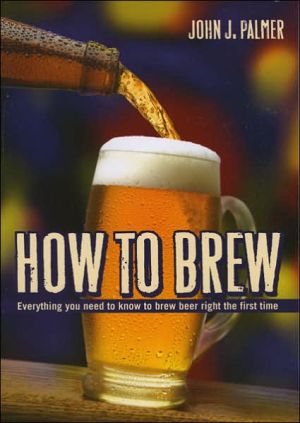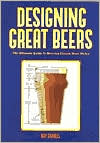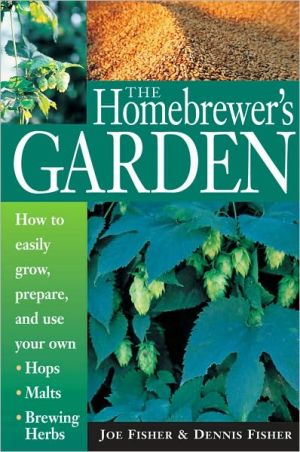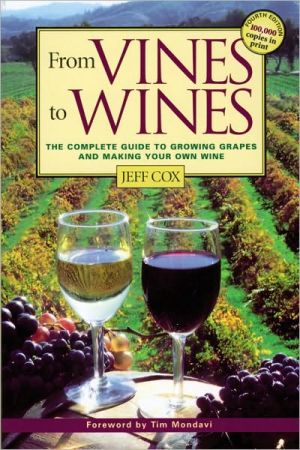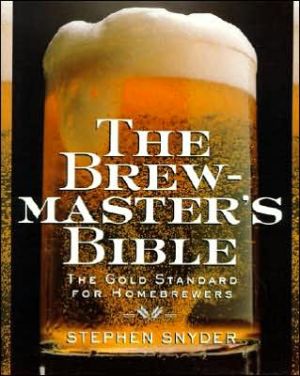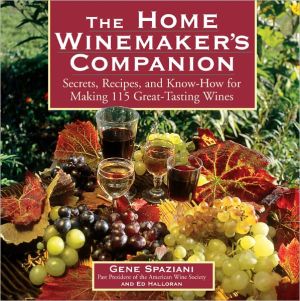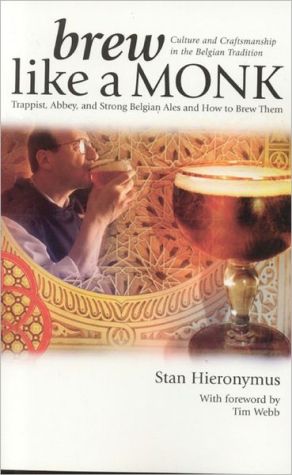Modern Winemaking
Here is a practical, comprehensive guide to winemaking, wines, and wine appreciation, written by an expert uniquely qualified by many years of experience in the field. Looking at winemaking as a craft as well as an art, Philip Jackisch augments a wealth of information and theory with many detailed examples. "It is now possible for anyone with access to grapes or other ingredients of decent quality to make consistently palatable or even excellent wines," he writes.\ In clear language aimed at...
Search in google:
Here is a practical, comprehensive guide to winemaking, wines, and wine appreciation, written by an expert uniquely qualified by many years of experience in the field. Looking at winemaking as a craft as well as an art, Philip Jackisch augments a wealth of information and theory with many detailed examples. 'It is now possible for anyone with access to grapes or other ingredients of decent quality to make consistently palatable or even excellent wines, ' he writes. Library Journal A research chemist who has been active in the wine industry for many years, Jackisch is also a writer and senior editor of Wine magazine. Aiming at the amateur winemaker, he discusses grapes, wine composition, equipment and materials, microorganisms, and fermentation. In discussing cellar operations, he offers sound advice on methods for problem prevention, aging, blending, and laboratory analysis. He also covers competitions, record keeping, sensory evaluations, vinegars, and sources of supplies and additional information. Offering up-to-date, clear explanations of methods, rather than detailed ``how to'' guidance, Jackisch's book will be popular with small-quantity winemakers and anyone considering making wine. Carolyn I. Alexander, USACDEC Technical Information Ctr., Fort Ord., Cal.
Preface\ 1. An Overview of Winemaking\ Winemaking Treatments Craftsmanship and Artistry The Importance of Consumer Preferences\ 2. Grapes\ Grape Varieties and Clones Grape Genetics and Hybrids Factors That Influence Grape Quality Purchasing Wine Grapes Growing Wine Grapes\ 3. The Composition of Wines\ Carbohydrates Alcohols Organic Acids Phenolic Compounds Nitrogen Compounds Carbonyl Compounds Inorganic Compounds Odorous Compounds Gases Chemical Additives\ 4. Winemaking Equipment and Materials\ Winery Facilities Necessary Equipment for the Home Winemaker Other Useful Equipment for the Advanced Winemaker Necessary Materials for the Home Winemaker Other Useful Materials for the Advanced Winemaker\ 5. Microorganisms and Fermentations\ Molds Still Table Wine Yeasts Other Wine Yeasts Malolactic Bacteria and Malic Fermenting Yeasts Yeasts and Bacteria That Cause Spoilage\ 6. Cellar Operations-Preventing and Correcting Problems\ Preventing Clarity Problems Preventing Color Problems Preventing Loss of Fragrance Preventing Off Odors and Flavors Preventing Taste Problems Preventing Other Flavor Problems Preventing Microbial Infections Quality Control Procedures Restarting Stuck Fermentations Reducing Hazes Reducing Color and Off Odors Reducing Oxidation and Volatile Acidity Reducing Odorous Sulfur Compounds Adjusting Bitterness and Astringency Removing Trace Metals Fighting Microbial Infections Knowing When Corrections Are Hopeless\ 7. Adjusting Wine Acidity\ Desirable Acidity in Wines An Outline of Acidity Adjustment Methods Methods of Increasing Acidity Reducing Acidity by Amelioration Reducing Acidity by Chilling Reducing Acidity by Chemical Additions Reducing Acidity with a Bacterial Fermentation Ion Exchange Adjusting Acidity by Blending\ 8. Aging Wines\ Controlling Oxidation Inert Aging Containers Aging in Wood Wood Cooperage Preparation and Maintenance of Barrels Topping up Barrels Wood Extractives Oak Chips and Extracts\ 9. Wine Blending\ Blending Strategies Planning the Blend Blending Tactics Blending for Color Blending for Fragrance Blending for Taste Blending for Alcohol and Body Blending for Wood Extract Blending for Oxidation and Maturity Other Blending\ 10. White Table Wines\ White Wines from Grape Concentrates Standard-Quality White Wines from Grapes General Quality Factors in White Wine Production Premium White Wines-Fresh, Lighter Style Premium White Wines-Aged, Heavier Style White Wines from Native Grapes\ 11. Red Table Wines\ Red Wines from Grape Concentrates Standard-Quality Red Wines from Grapes Hot-Pressed Wines General Quality Factors in Red Wine Production Rose Wines Nouveau Red Wines Premium Red Wines-Aged, Heavier Style Red Wines from Native Grapes\ 12. Sweet Table Wines\ Grapes for Sweet Table Wines Production of Sweet Wines by Incomplete Fermentation Botrytised Wines Sweet Wines Produced by Sweetening Dry Wines Preserving Sweet Table Wines\ 13. Sparkling Wines\ Traditional Champagne Method of Making Sparkling Wines American Bottle-Fermented Sparkling Wines Transfer-Process, Tank-Fermented, and Carbonated Sparkling Wines Alternative Methods of Producing Homemade Bottle-Fermented Wines Other Natural Sparkling Wines\ 14. Fortified Wines\ Characteristics of Sherries Traditional Spanish Flor Method of Making Sherries Non-Spanish Flor Sherries Non-Flor Sherries Characteristics of Ports Portuguese Method of Making Ports American Methods of Making Ports Other Fortified Wines\ 15. Flavored Wines\ Vermouths Other Aperitif Wines Fruit-Flavored and "Special Natural Wines"\ 16. Nongrape Wines\ Fruit and Berry Wines Mead Other Nongrape Wines\ 17. Sensory Evaluation of Wine\ Equipment and Conditions Needed for Sensory Evaluation Evaluating Color and Clarity Other Aspects of Wine Appearance Evaluating Fragrance Off Odors Evaluating Taste Wood Character Overall Wine Quality\ 18. Wine Competitions\ Typical Competition Rules Judging Panels Judging Procedures Interpreting the Results of Judgings Hints on Winning Competitions Wine Label Competitions\ 19. Wine Storage and Record Keeping\ Storage Containers Seals for Storage Containers Labels and Capsules on Wine Bottles Storage Racks The Need for Wine Records Vineyard Records Winemaking Records Wine-Tasting Records\ Appendix A: Measures, Conversion Factors, and Calculations Appendix B: Laboratory Evaluation of Wines Appendix C: Wine Vinegar Appendix D: Sources of Supplies Appendix E: Additional Sources of Information\ Suggestions for Further Reading Index
\ Library JournalA research chemist who has been active in the wine industry for many years, Jackisch is also a writer and senior editor of Wine magazine. Aiming at the amateur winemaker, he discusses grapes, wine composition, equipment and materials, microorganisms, and fermentation. In discussing cellar operations, he offers sound advice on methods for problem prevention, aging, blending, and laboratory analysis. He also covers competitions, record keeping, sensory evaluations, vinegars, and sources of supplies and additional information. Offering up-to-date, clear explanations of methods, rather than detailed ``how to'' guidance, Jackisch's book will be popular with small-quantity winemakers and anyone considering making wine. Carolyn I. Alexander, USACDEC Technical Information Ctr., Fort Ord., Cal.\ \
